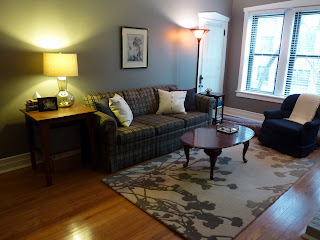We got started a few months back by getting accounts in there, so that it would have time to build up some data. Then, I gave a quick overview of the different components. Hopefully, all of your accounts are in there, and you've been checking in every week or so on your transactions. You should also have made some guess budgets, and have probably been revising them. Some of the alerts are useful; some make no sense for quite some time ("You spent $1,000 on rent. You usually spend $173.42 on rent.") as they average over a shorter period of time and apparently confuse themselves.
Anyhow, for me, I was looking for a good big picture of my spending and to help me plan. After setting up my budget categories and spending for a few months, I started noticing some things that confused me or just didn't match the way I spend or what I was hoping to track. I'm not in debt, nor am I an overspender, so this isn't something I need to monitor obsessively and some of the (over) categorization was making it confusing to get a quick overall picture.
Mint auto-categorizes transactions, usually pretty accurately. My problem was in things I won't spend regularly on--I'm looking at you, stamps. Or a magazine subscription. I don't spend enough (or frequently enough) on little things like that to have a budget for them, but I do want to know where and how they're adding up. For me, what made the most sense was to pare down my categories into the following:
- Home (with Home Improvement & Furnishings subcategories)
- Auto & Transport (with a Gas & Fuel subcategory)
- Food & Dining (with Groceries & Restaurants subcategories)
- Charity
- Travel
- Bills & Utilities
- Shopping
- Gift
- Personal Care
Other than that, if you don't see it on the list, its probably "Shopping". There are subcategories under that like "Clothing" "Books" "Sporting Goods" and "Hobbies", and I categorize things that way, but it all pulls from the same budget. I don't spend enough on any one category for it to need its own bucket, and as long as I stay within my overall budget, I'm not too concerned where my money goes. This is especially true since I often spend in cycles. I might not buy any new clothes for several months and then want to refresh my wardrobe, or have a shopping spree at Michael's.
Along those lines, there are a couple of options when you set up a budget, including to set up a budget for "every month", "every few months" and "once". The idea behind it is to help you budget for things like auto insurance, which is only due once a year. However, this confused me. I swear it double counted my auto insurance, and I think my way is much easier:
Mint also allows you to rollover a budget, and virtually all of mine do this. That means I put aside an extra $70 a month in my "Auto" budget, and by the time my car insurance is due, I've built up enough of a surplus to pay that money out of my regular budget. And I still have that "on average" idea of how much I spend in a month. This also works well for things like Personal Care, where I put only $25 each month, not even enough for a haircut. But I get my haircut infrequently, and if I have the money in that account, I won't feel guilty using it on a manicure either. I also "save up" for bigger things using this method, instead of Mint's goals. I put money into my travel, home improvement and furnishings accounts, and know that as long as I don't go over, I can do any home projects I want that fit within the budget. The goals are great if you need to regularly transfer money (like to pay off debt) but if you're just trying not to spend more than an average of $100/month on furnishings, I think my method is way easier (and I didn't get confused, like I did with Mint's saving up feature, or yelled at, like I did with goals).
Although this makes me recategorize things sometimes to make it more streamlined, it gives me a good (and quick!) overall picture of my spending that I find really helpful. If you want to use a similar method, think of the places you're really interested in monitoring and where you spend enough to be able to see trends, and make smaller categories for those. For everything else, make life easier and don't create a zillion budgets!
I know this was a lot, so let me know if there's anything else I should have covered! What has your experience with Mint been?













